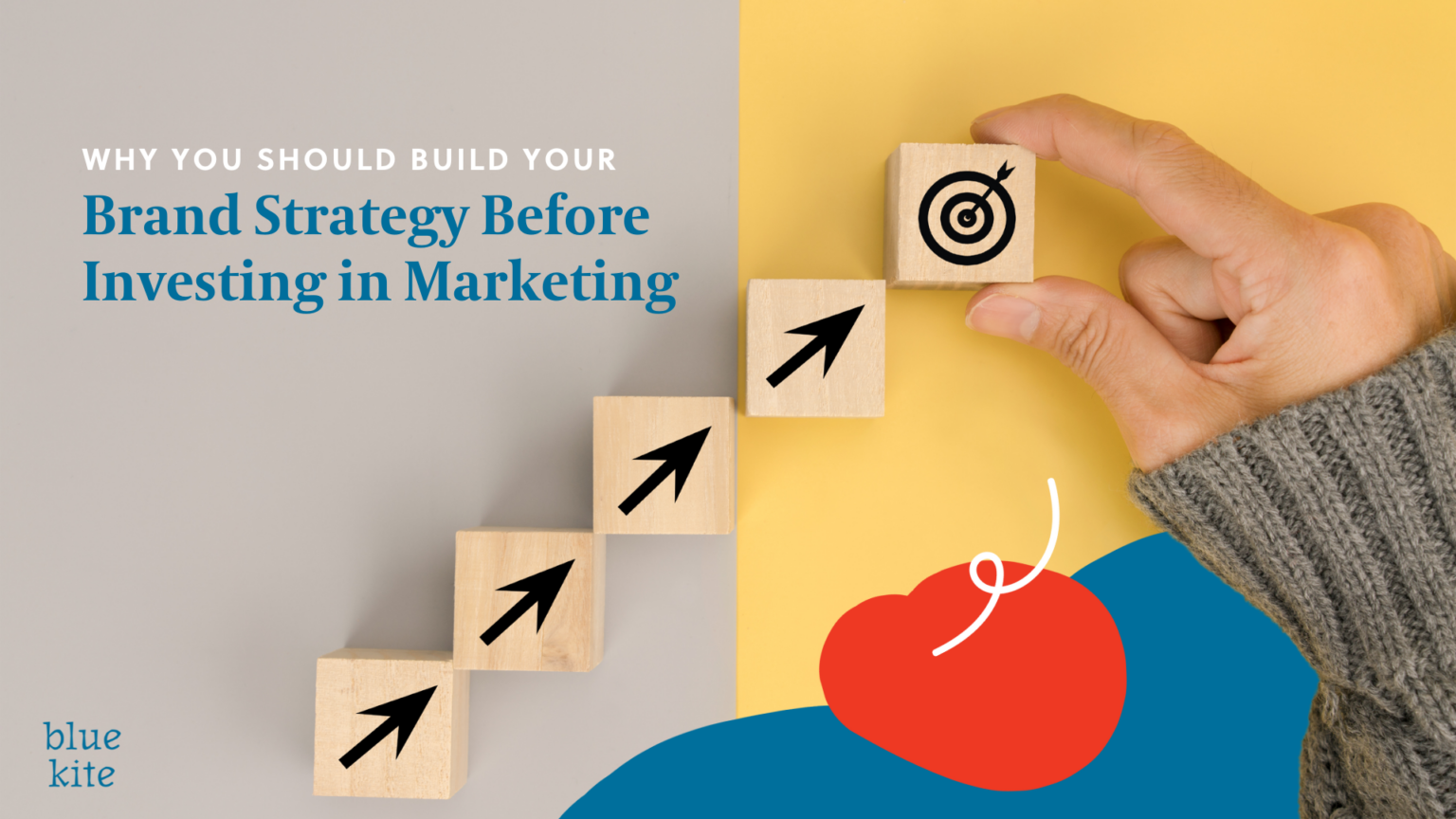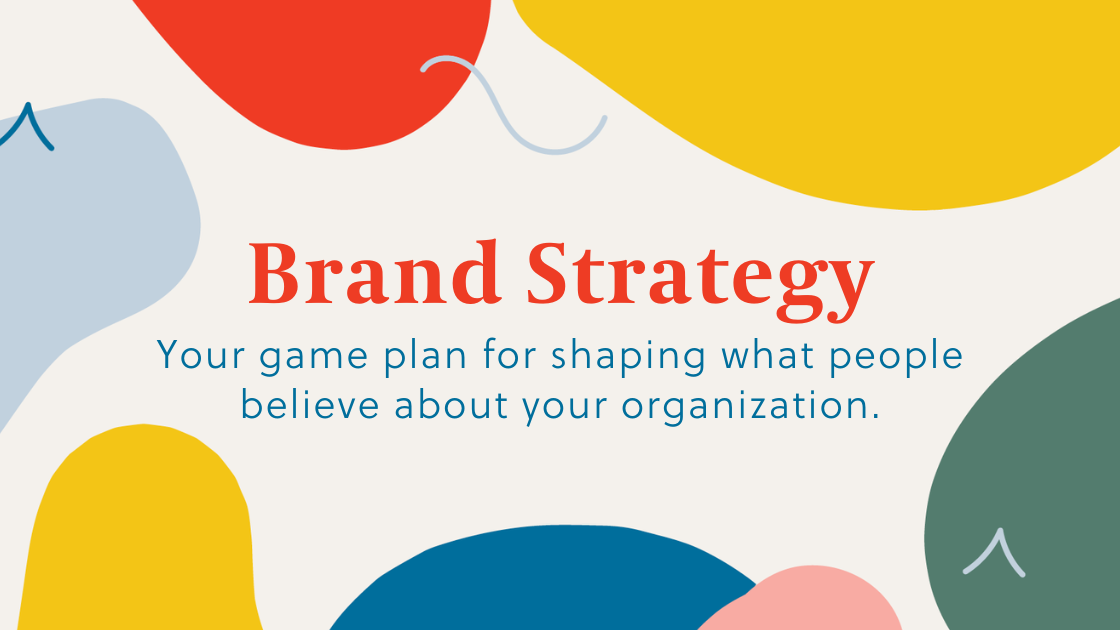If you’re ready to attract more customers and increase revenue for your business, chances are good that marketing is at the top of your list of initiatives for next year.
Oftentimes, that looks like building a new website, ramping up your content marketing and social media efforts or doubling down on advertising.
And while marketing does a great job of getting your message into the hands of more people, it doesn’t work well without doing this one thing first — building a brand strategy.
A brand strategy helps you shape what people believe about your organization. It gives you a game plan for how to position your company in the market and how to talk about what you do.
Without a strong brand strategy in place, you’ll waste a lot of time and money on marketing that misses that mark. It will be difficult to create a website or marketing efforts that convert prospects to customers.
Before you invest heavily in any marketing efforts, you must get clear about who you are, what you do, whom you serve and what makes you different from everyone else in the market.
Otherwise, your marketing efforts will fall flat.
Branding and marketing is a lot like building a house.
Your brand strategy is the foundation. Although people can’t see the foundation, it’s the critical component to ensure your house will stay standing. Once the foundation is in place, you can build the house — your marketing efforts — on top of it.
How Brand Strategy Improves Your Marketing
So, why does brand strategy matter so much?
Here are some of the top ways brand strategy improves your marketing efforts:
- More defined target audience. A brand strategy helps you better identify your target market and better understand why they choose you. This research is gold and helps you build audience profiles to attract more of your best customers. When you know who you’re talking to (and where to find them), your marketing will be far more effective.
- Unique market positioning. Understanding what makes your business unique helps you carve out a well-defined market position that makes it easier for customers to choose you.
- Consistent, compelling messaging. Most marketing suffers from a scattershot approach. A brand strategy gives you well-defined messaging geared to attract ideal customers. Once this is in place, you have a script that everyone on your team can use to talk about your business. The more consistent you are with your message, the more successful your marketing will be.
- Identifiable personality. The personality of your brand stems from strategic work to identify what makes your business special. Building a unique, identifiable brand personality helps you create consistency across your marketing team so all of your content sounds like it’s coming from your brand.
- Strong visual identity. A brand strategy will help you determine whether your visual identity represents your organization well. Oftentimes, it’s a brand strategy that proves the need for a new logo and brand suite.
With all of these pieces in place, you’ll spend a lot less time guessing about how to attract more of your ideal clients and customers. And ultimately, you’ll have a lot less marketing spending because your messages will be more likely to hit the mark.
Signs You Lack a Well-Defined Brand Strategy
On the other end of the spectrum, what happens without a strong brand strategy?
Here are some key signs that your brand strategy could use some work:
- Not attracting the right clients. Are you getting too many low-paying clients or customers that are a good fit? If you’re not attracting the right kinds of customers, you could use some work refining your target audience.
- Marketing conversions are low. Are you getting good ROI with your marketing? Are your marketing efforts converting prospects to customers at a good rate? If not, you might not be doing enough to stand out in your market or you might not be attracting the right people with the right message.
- Unclear or inconsistent messaging. Do you know your brand’s elevator speech? Does your website and marketing materials say one thing, but your team says something else? Make sure you have strong messaging that is consistent throughout your marketing efforts.
- Multiple identities. Do you have multiple names or monikers for your business? Does your logo say one thing and your team and clients say something else? If you go by too many names, you might need to refocus your branding.
- Name confusion. Does your company get confused with other businesses? Or, does the name suggest you do one thing, but you do something else? If people are unsure about who you are and what you do, you may need to consider changing your company name.
- Generic design. Does your logo design use clip art or copy another company’s concept? If you want to stand out, generic design won’t help you get there.
- Dated design. Even the biggest brands in the world can get dated. Is your design is no longer fresh or relevant? Does it no longer represent your company or send the right message to your customers?
- Lack of personality or emotion. Do certain words or feelings come to mind when people think of your brand? Does your brand evoke emotion? If not, it should. If you want your brand to truly shine, it should have vivid personality that people can easily identify.
If you answered “yes” to any of the above questions, you need to focus on your brand strategy.
Then, once you have a strong brand in place, then you can move forward with building and implementing a marketing strategy.
If you focus on building your brand strategy first, your entire marketing effort — including your website, blogging, social media, media relations, etc. — will be way more successful.
What do you think about this? Do you have a strong brand in place?
* * *
This post was originally published on May 22, 2014. This article was expanded and updated on November 21, 2023.




